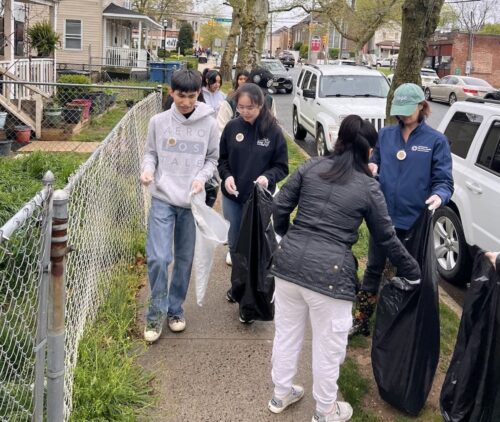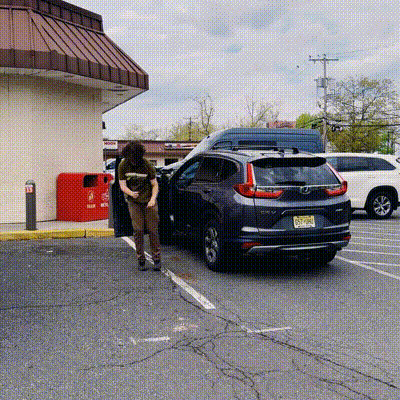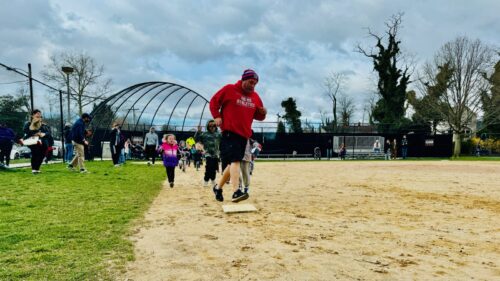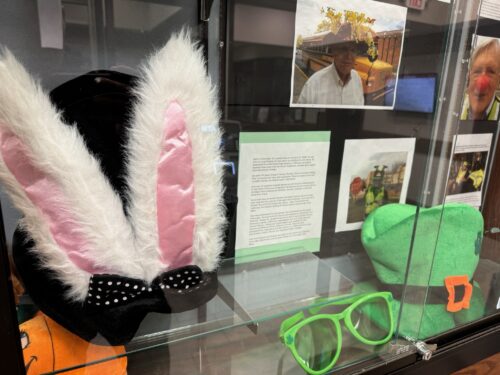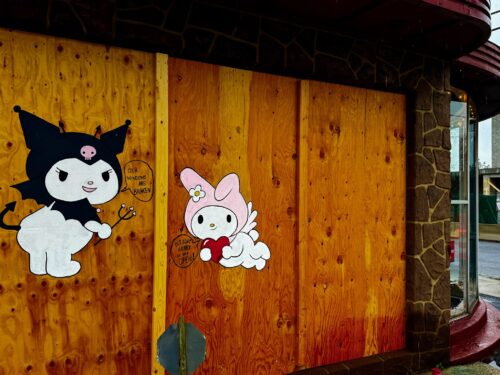By LINDA G. RASTELLI
Sachi, a gorgeous eleven-year-old Siberian husky, is sitting on a metal table at the Red Bank Veterinary Hospital displaying the smile her owners say makes her “the mayor” of her Holmdel neighborhood.
Meantime, Dr. Keith Stein and veterinary technician Christine Chevalier are preparing to send the mayor into dreamland, intravenously.
Seconds later, Sachi stops moving, her stunning pale-blue eyes go blank, and her body goes limp.
It’s the moment pet owners fear most about animal dentistry, says Stein. They worry their pet won’t wake up from anesthesia.
That’s no surprise to Luisa Visconti, who with her husband, Frank Daly, has owned Sachi, a rescue dog from Long Island, for four years. Visconti took the day off and was heading to a Pilates class that morning to try to relax.
“I was very strung out, very concerned,” she recalled later. “I just wanted to her to come home safe and alive.”
Visconti is clearly devoted to her “social butterfly,” and says the dog returns the adoration. “She checks on us when we’re sick,” she says.
With a veterinary student and your intrepid redbankgreen correspondent looking on, everyone dons surgeon’s masks and Stein puts on a pair of magnifying eyeglasses. He opens Sachis mouth, gently positioning her enormous tongue out of the way with his latex-covered fingers and clamping her jaw apart. Easier than saying, “open wide.”
Red Bank Veterinary, which is in Tinton Falls, has scores of doctors, but only one veterinary dentist. Though the specialty is 20 years old, theres still only one other in New Jersey, and just 100 worldwide, says Stein.
A transplant from Tennessee, Stein got his veterinary training at Auburn University, did a residency in dentistry & oral surgery at the University of Illinois and worked at the Columbus (Ohio) Zoo & Aquarium, before taking the job at RBVH last year. He’s never worked on a human mouth.
Sachi is here because during her six-month checkup, her regular vet found a rotted tooth with exposed roots. She also has advanced periodontal disease her gums have receded and some teeth are discolored.
“All this bacteria gets into her body,” Stein says, chipping away at some nasty-looking plaque.
Most cats and dogs eat better than humans do and can avoid cavities in their first three years, says Stein. But later on, serious problems can develop. He says 70 to 80 percent of dogs and cats over the age of three years have some degree of dental disease, which is hard for owners to notice. Sometimes the animal will be lethargic, or refuse food, or lose interest in toys.
“You might think it’s just slowing down,” Stein says of an aging pet, but dental disease can hurt the rest of the animal’s body, and causes halitosis. “Theres dog breath, and there’s bad breath,” he says. Many of his patients are police dogs whose training consists of lots of “bitework,” sometimes damaging their teeth in the line of duty. Injured teeth are susceptible to infection.
Stein begins pulling a pair of rotten teeth. One is fractured and requires some digging. Canine teeth have a different “crown to root ratio” than human teeth that makes them tougher to remove. Not to get too graphic here, but blood flows. This is where redbankgreens correspondent proves herself not so intrepdid and backs away a bit from the operating table.
For Stein, though, it’s just another day in the shop. “We only get one radio station here,” he says ruefully of the pop-rock music piped in to the hospital. He’s a country music fan who endures good-natured teasing about Nashville from the veterinary student.
Finally some brownish, pinkish stubs that barely resemble teeth rest on a tray near the dentist’s tools. Stein polishes the remaining teeth on the left side of Sachi’s mouth with a paste that smells oddly like Creamsicle, then turns her head to work on her right side.
The tab is about $1,000 so far, Stein says, for two extractions and cleaning. X-rays now show that Sachi’s rotted tooth the first molar on her lower right jaw needs either a root canal or extraction.
“That tooth is important for chewing and grinding,” Stein notes, before phoning the owners for a decision. A root canal it is. It’s been almost an hour, and Stein and Chevalier press on, dare we say it, doggedly.
More tools are assembled, and Stein drills two canals in the tooth. The “pulp” (you dont want to know) is cleared out of the openings with a succession of endodontic files, each slightly larger than the last. This part takes longer than anything else.
The tooth is about an inch wide, and when Stein is finished with this stage, there are two visible holes, one on each side. A tooth-colored material that contains tree resin the same product used on humans is applied, then dried. Many x-rays are taken before Stein is satisfied and the tooth is “varnished” with a blue substance.
Sachis mouth gets a final spritzing. Shes done! Her mouth looks clean, her teeth shine. Her owners are notified.
At last, Sachi’s breathing tube is removed; shell wake up shortly. Stein will prescribe an antibiotic and a painkiller for the soreness shell have later.
Five days later, Sachi is eating only soft foods, but doing well, the owner reports.
“When Dr Stein brought her out to us, I was relieved to see she was in good spirits,” Visconti tells us via email. “She was happy to see us.”




